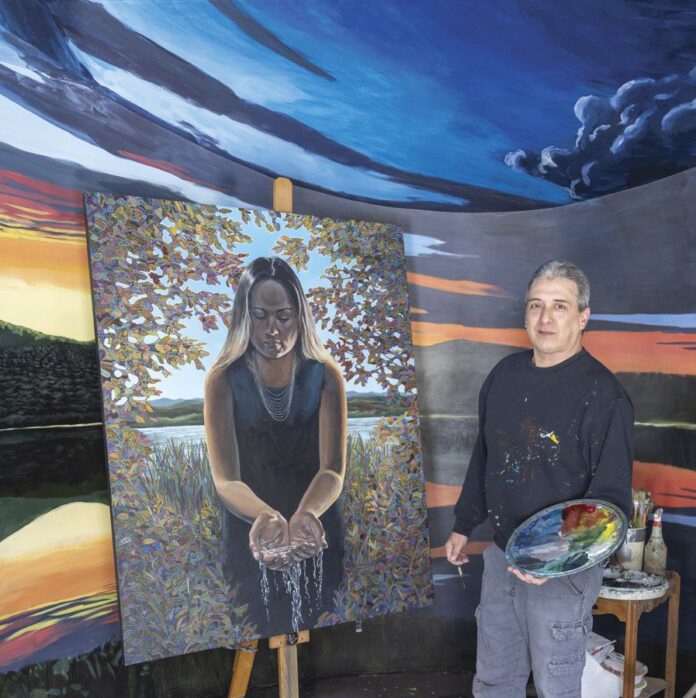
Ask David Fadden about water pollution and he shares a story from his childhood in Onchiota.
When he was about 7, he went walking with his father, a Mohawk who grew up at the Akwesasne territory on the St. Lawrence River, and tossed a stick into a stream.
“You know that will end up in the ocean,” his father said.
“It hit me, the concept that it’s all connected. It goes to the Saranac River, which empties into Lake Champlain, which goes up into the St. Lawrence, which goes out to the ocean.”
Water pollution happens the same way, Fadden said. “If we throw garbage in there, it’s going to end up somewhere else. It will seep into the ground or go into a spring or end up in a river. And it has negative effects. Not just on human life but all life.”
In June, in Saranac Lake’s BluSeed Studios, awareness of our precious water is the focus of a science-infused art exhibit, “Multi-Cultural Interpretations on How Pollution Impacts the Lake Champlain Watershed.”
The project was funded with a grant from the Lake Champlain Basin Program, which organizes and supports efforts to protect the natural and cultural resources of the watershed: 8,234 square miles within New York, Vermont and Quebec, home to more than half a million people.
New works were created by five artists: Carol Marie Vossler, founder and director emeritus of BluSeed; Martin Akwiarnoron Loft, a First Nation photographer and printmaker who was born in Kahnawake, Mohawk Territory near Montreal; Katsitsionni “Junie” Fox, a Mohawk filmmaker from Akwesasne; Steven Kostell, a papermaker and University of Vermont professor; and Fadden, a Mohawk painter and storyteller.
Curt Stager, a professor at Paul Smith’s College, is the science adviser. A paleontologist and climatologist, Stager is co-host of “Natural Selections” on North Country Public Radio and author of “Still Waters: The Secret World of Lakes.”
For nearly a year, the artists and Stager have conversed.
“I showed them pictures of some of the key molecules that are causing the pollution instead of just giving them a name and a formula,” Stager said. “Under a microscope, they’re beautiful, like diamonds and emeralds and green necklaces.”
Phosphorus, from excess farm fertilizer and leaky septic systems, is a major polluter, triggering algae and cyanobacteria blooms in Lake Champlain that are harmful to fish and can be toxic.
“You can’t go in the water or you can’t use it for drinking,” Stager said. “If pets or livestock drink it, they can be hurt. If you add the stronger storms we are getting due to climate change, you wash more of this stuff into the lake too. It’s a global issue, happening in lakes all over the world.”
The BluSeed project packs “more of an emotional impact than a straight science report,” Stager said. “If you see something that moves you, it goes into your soul and it affects how you think and feel. It motivates people to do things.”
Analysis:
This article was interesting because it explained the different manner in which art and artist can tackle issues that are environmental especially in the case of water pollution. The artist ended up collaborating on the issue of pollution with five other artist to create individual art pieces. This article illustrated the unique way of implementing art with solutions which talking about prevalent issues.



